
By David C Forman, bestselling author “Fearless Talent Choices”
WHY SHOULD YOU CARE?
In today’s volatile environment constant change is the new status quo. In this article you will learn about demystifying change and what it takes to be a “Specific Generalist” so that HR will be not only narrow the gap and implement change more effectively today, but to prepare us for an increasingly turbulent world and uncertain future.
One of my favorite books just turned 22. In 2000, Jeffrey Pfeffer and Bob Sutton released The Knowing-Doing Gap. It’s not the catchiest of titles. That award probably goes to Marshall Goldsmith’s What Got You Here Won’t Get You There. But what endures about the Pfeffer-Sutton title are the questions it suggests: Why do we know so much but can’t turn knowledge into action? Why aren’t we getting any better? Why do we continue to have the same problems again and again? These haunting observations are made more impactful because they come from two very gifted Stanford professors. If these guys don’t know the answers, then we are all in trouble.
The authors do provide thoughts and recommendations on why the gap exists, including over-reliance on talk versus action, limitations of formal training programs, shortcomings of explicit knowledge, superficial attempts to reproduce best practices, failed promises of knowledge management systems, the unintended biases of human beings, and the fear of upsetting colleagues and co-workers. Many of Pfeffer and Sutton’s subsequent themes, such as scaling excellence and the impact of unfulfilling workplaces, take shape in this important book
I am also haunted by these questions and the reality that this performance expectation gap exists and is not closing any time soon. Perhaps the clearest statement of this problem came from an ex-CEO of Hewlett Packard:
“If HP only knew what HP knows, we would be three times more profitable.”
My suggestions for how to break out of this cycle of waste are built on the insights of Jeffrey and Bob but are augmented by the findings of subsequent authors and my own experiences.
1. We over-intellectualize change. As human beings, we are proud of our rational heritage and tend to think we can figure anything out; but that is often not the case. As William Bridges observed many years ago, “Before organizations can transform, people must transition.” and people transitions are usually slower, more difficult, and fraught with emotion. John Kotter recognized this truth in The Heart of Change (1998) when he noted that “see, feel” experiences are more significant motivators than “analyze, think” evidence. More recently the Heath brothers in Switch (2010) state that 80% of change is about our emotional—not rational– selves. The biggest change issues to solve are not technical, they are about acceptance and willingness to do something different.
2. Don’t just tell people what to do, tell them why it needs to be done. We are very good at telling others what to do. The problem is that while this might make us feel good, it doesn’t work. Simon Sinek (2009) makes this point very clearly in describing his Golden Circle. He recommends starting with “why” something needs to be done, and then moving to “how.” And only then, detailing “what” needs to be done. This is exactly the opposite of the way in which most communication occurs. Sinek goes on to show that different parts of the brain process the why, how, and what messages; with the “why” being most strongly connected to our emotional selves.
3. The real power of persuasion. “I never try and teach my students anything. I only try to create an environment in which they can learn.” We should listen to smart guys because Einstein got it right. Dan Pink (2012) came to the same conclusion. We tend to think that our influencing skills are related to how we make the case to others…how articulate and charismatic we are. But the greatest impact comes from our ability to structure situations, so individuals directly experience the need to change themselves. These direct experiences are more meaningful than any message delivered by others, no matter how brilliant or well spoken.
4. The major reasons people don’t do what we want them to do. I was taught a long time ago that there are three major reasons why people don’t do what we want them to do: 1) They don’t know what to do, 2) They don’t want to, and 3) The system discourages them from doing it. Far and away, the most impactful of these reasons are the last two, but we spend more time and money on the first one (i.e., training programs and knowledge transmission), thereby solving the wrong problem.
5. The Howie factor: Leverage credible allies. I was running a review session for a ground-breaking customer simulation project for senior sales leaders. It was unlike anything they had experienced before, and people were hesitant to provide feedback on such a novel program; but one person said simply: “Does Howie like this?” Howie, it turns out, was a legendary salesperson who was respected by all; and the implication was that if Howie was fine, we were all in. A critical factor in trying to influence people to do something different is the support of colleagues who endorse the idea…and not just the numbers of supporters or which department they represent, but the respect and credibility they elicit. Their ‘social capital’ is absolutely vital. Kotter recognized this significance when he talked about forming a strong guiding coalition. Find your Howies and recognize that influencing people to change behavior is a team, not an individual sport.
6. The power of safety zones. There are a whole variety of values, norms, and biases that get in the way of knowledge transfer, acceptance, and implementation. I have found Amy Edmondson’s (2018) work on psychological safety to be immensely valuable. It is a way to enable people on teams and in communities to feel freer to contribute, be heard, and able to challenge key thoughts and actions. I can’t help but think that this concept could be hugely important in bridging the emotional and psychological aspects of accepting and implementing change.
More Systemic Problems Need to Be Addressed
I hope you find these ideas useful and practical, but I believe there are deeper, more systemic issues that impact what we know, what is worth knowing, and how to convert knowing into action. All of these questions pertain to narrowing the knowing-doing gap and implementing change more effectively. The following comments are based on my own experiences as a student, author, professor, chief learning officer, and leader of a multi- million dollar performance consulting company. Some of my views may be pointed, but I think they need to be aired; and I welcome dissenting perspectives. My observations:
- I am disappointed with how poorly many authors cite and give credit to previous contributions. It’s almost as if sharing these contributions takes away their own work. And often when references are made, they are brief and cursory, without any attempt to add meaning and understanding. I have, for example, read far too many books on motivation that fail to capitalize on the work of leading contributors such as Maslow and Hertzberg. That’s not right and it leads to constantly reinventing the wheel and not leveraging past wisdom. When we don’t give proper recognition to past significant contributions, there is little wonder that the knowing-doing gap exists and is perpetuated.
- The emphasis in both academic and publishing circles is to find new and unique contributions to what we know. This is doubtlessly good from a knowledge creation perspective, but taken to excess, it can be restrictive. This perspective can lead to knowledge that is unique but not meaningful, relevant, or important. This results in trivial distinctions that don’t make a difference. Perhaps a key reason the knowing-doing gap exists is because a lot of ‘knowledge’ is the chaff, not the wheat. With so much noise in the system, it can be very hard to focus on what is truly significant and meaningful.
- Another issue with an over emphasis on unique contributions is that this new knowledge, almost without exception, is specialized, narrow, limited, and usually housed in a single discipline. Fareed Zakaria, among others, has a different view about meaningful and lasting contributions. He states that most value and innovation come from the collision of different disciplines: “Today, value lies in the combination of engineering, arts and the sciences, as it has for centuries. It is not about in-depth knowledge in one area or discipline, it is about the connections and frontiers shared by the disciplines.”
- Creativity can exist in different forms. Steve Jobs believed it “is connecting things in new and different ways.” It’s not necessarily about new knowledge but new relationships, meaning and linkages. Jobs’ view requires the ability to: synthesize, assess existing contributions, have a broad multidisciplinary mindset, embrace a range of different experiences, and have the curiosity of a detective looking for clues, and the soul of an artist.
I have read two books lately that are wonderful examples of this approach. In Sapiens (2014), Yuval Noah Harari traces human experience across centuries by using evidence, stories, myth, and different disciplinary lenses. It is a fascinating and, at least for me, very different view of how we evolved and adapted as a species. In Work (2020), James Suzman, a cultural anthropologist, brings his varied insights to how we have viewed work and jobs over the millennia and into the future. There are lessons from termites, bushmen, birds, and our Stone Age ancestors. These books are almost like sitting around a campfire, listening to a wise prophet helping us understand the past, and preparing for uncertain futures. These authors make far-reaching connections that many of us do not see.
The way forward from this cycle of wasted knowledge lost productivity and widening knowing-doing gap is to act smarter and think differently. Hopefully, both the practical examples and deeper systemic issues that I have outlined can help narrow the gap and accelerate both the acceptance and implementation of changed practices. Keywords become synthesis, range (Epstein, 2019), cross-disciplinary, boundaryless, and meaningful connections,
The most valuable role today, I believe, is to be a Specific Generalist. Be a Generalist enough to see the bigger picture, look for the connections, be flexible and resilient, anticipate and embrace change, and have the social skills to influence colleagues. Be Specific enough to learn new skills quickly, adapt to different situations, and drive the business forward. These are exactly the right qualities to not only narrow the gap and implement change more effectively today, but to prepare us for an increasingly turbulent world and uncertain future.
“The illiterate in the 21st Century will not be those that cannot read and write, but those who cannot learn, relearn and unlearn.” Alvin Toffler
Meet the author at the upcoming Talent@Work Forum
Written by: Dave Forman
Change Management Future of HR HR Strategy Strategy & Transformation
Previous post

- 2736
labelArticles today2022.03.23.
Background checks upon offering jobs to Ukrainian refugees
By Lisbeth Claus and Lester Rosen, The HR Congress Digital Magazine WHY SHOULD YOU CARE?As organizations face the new challenges of the humanitarian crisis of Ukraine, one of the best [...]
Similar posts

labelArticles today2024.07.24.
AI-Powered HR: Strategic Benefits and Practical Applications

labelArticles today2024.06.24.









Post comments (0)